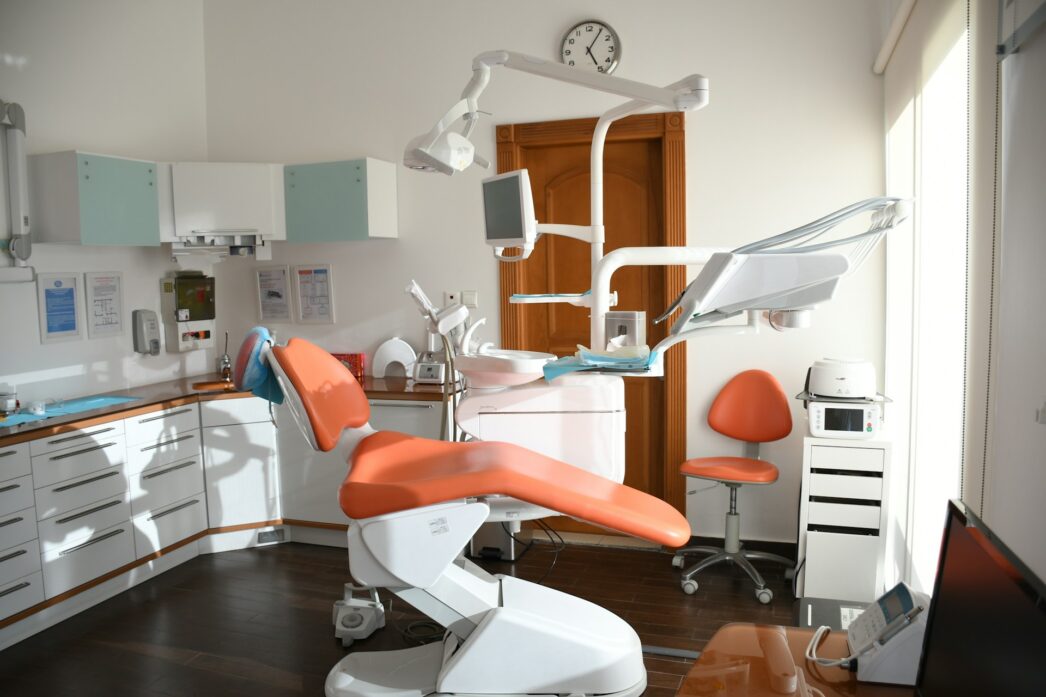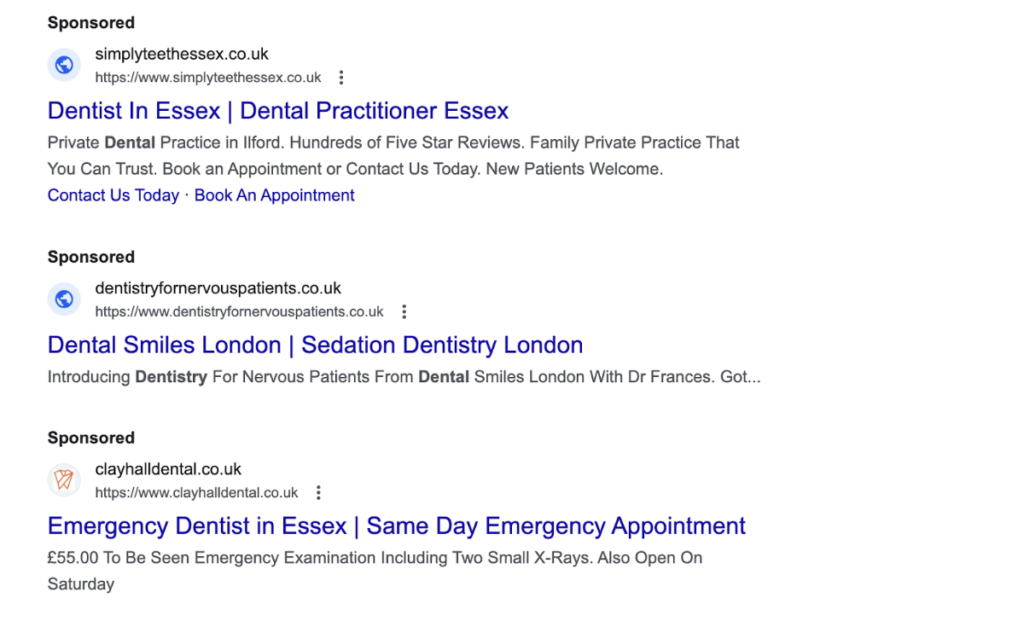
Is your dental clinic struggling to expand its reach and attract new patients? We have the solution for you – digital marketing.
Digital marketing involves using online channels like social media and email to promote your clinic and engage with potential patients. Unlike conventional advertising on billboards and signs, digital marketing operates exclusively online. Embracing these strategies is important if you want your dental business to remain competitive in today’s digital age.
In this article, we explore effective digital marketing strategies tailored for dentists, helping you bring in new patients and grow your dental practice.
Why is Digital Marketing Important for Dentists?
Digital marketing provides a direct line of communication with your target audience, allowing you to connect with potential patients where they spend a significant amount of their time—online.
Now, let’s look at the specific benefits digital marketing brings to dentists:
- Enhanced visibility: Digital marketing strategies such as PPC and SEO improve your positions in paid and organic search results respectively, making it easier for potential patients to find you.
- Targeted reach: Through strategies like social media advertising, you can reach specific demographics likely to be interested in your dental services.
- Cost-effectiveness: Compared to traditional marketing channels, digital marketing is often cheaper. Techniques like content marketing and social media engagement provide significant exposure without the hefty advertising expenses.
- Real-time engagement: Responding quickly (and politely) to queries or reviews on social media and maintaining an active online presence fosters a positive image for your dental practice.
- Educational content: Patients often look for more information before making healthcare decisions, than they do any other. Digital marketing enables you to share informative content, establish your expertise and build trust.
- Online reviews and reputation management: Online reviews heavily influence consumer choices. Digital marketing allows you to manage and respond to reviews, shaping a positive online reputation for your dental clinic.
- Community engagement: Digital marketing provides opportunities to connect with the local community. Whether through local SEO efforts or community-focused social media campaigns, you can strengthen your ties with the people you serve.
With over 34,000 registered dentists in England, your dental clinic really can’t afford to not invest in digital marketing. How else are your potential clients even going to know you exist?
Digivate has done digital marketing work for many dentistry and orthodontic practices, so we have seen first-hand the results these tactics can have. Here’s an example:
For one orthodontic practice, we were able to adapt to a dire situation (the pandemic), by changing their strategy, creating new landing pages and starting PPC campaigns on an entirely new set of keywords. The results? We increased their enquiries by 280%. This was made possible since digital marketing is quicker to implement than traditional marketing.
5 Types of Digital Marketing that are Proven to Be Effective for Dental Clinics
1. Social Media Marketing:
Social media marketing involves using platforms like Facebook, Instagram, TikTok, X, YouTube & even Pinterest to connect with your audience, share content, and promote your dental clinic.
Main Functions:
- Building brand awareness and community engagement
- Sharing educational content and brand updates
Activities:
- Creating engaging posts
- Running targeted advertising campaigns
- Responding to comments and messages promptly
- Using analytics to measure performance
- Sharing already existing blog content in a new fun format
Tools to Use:
- Hootsuite
- Buffer
- Sprout Social
Using social media for your dental practice helps make it more relatable and friendly. It creates a sense of community and emotional connection with people who might become your clients. It allows you to showcase your expertise, share patient testimonials, and connect with your audience on a personal level.
While social media is cost-effective for organic reach, paid advertising can incur costs. Plus, keeping up an active presence demands time and effort, and negative feedback on public platforms requires careful handling. However, we’ve come up with some handy tips to help you negate the negative effects – read more here.
2. Content Marketing:

Content marketing involves creating and sharing valuable, relevant content. The goal is to build trust, establish authority, and grow your website. Content marketing can take various forms, including blog posts, articles, videos, infographics, social media posts, and more.
Main Functions:
- Establishing authority and expertise
- Educating patients on oral health, dentistry & related topics
- Improving search engine visibility
Activities:
- Creating (and scheduling) blog posts, articles, and infographics
- Website copywriting
- Making educational videos
- Sharing content across various platforms
Tools to Use:
- Frase
- Canva
- HubSpot
Looking for more content creation tools? Read our article.
Content marketing positions your clinic as an authoritative source in the dental industry, therefore people are more likely to trust what you say & the services you offer. Informative content not only educates patients but also boosts your search engine rankings, making it easier for potential patients to find your clinic.
Consistent content creation requires time and resources. While organic reach is achievable, paid promotion may be needed for broader visibility. Additionally, measuring content marketing return on investment (ROI) can be challenging – but just because it is difficult to measure doesn’t mean it isn’t high.
3. SEO:
Search Engine Optimisation (SEO) involves optimising your online content to improve its visibility in search engine results. SEO is crucial for businesses and website owners because appearing higher in search results can lead to increased non-paid traffic, potentially attracting more customers and users to the site.
Main Functions:
- Enhancing website visibility on search engines
- Improving local search rankings for nearby patients
- Ensuring website content aligns with search queries and intent
Activities:
- Keyword research and optimization
- Local business listings and citations (Particularly on My Google Business Profile)
- On-page strategies such as technical SEO audits
- Off-page SEO strategies such as link-building
- Review management
Tools to Use:
- Ahrefs
- SEMRush
- Google Search Console
Local SEO directs nearby patients to your clinic, enhancing your visibility in local search results. Optimised content increases the likelihood of appearing in relevant searches, attracting individuals actively seeking dental services.
SEO is an ongoing process, and results take time. What we mean by that is, if you make a change today, you may only reap the rewards from it in three months. Also, it may require professional expertise for effective implementation and to monitor changes in search algorithms that can have severe impacts on rankings.

– Samantha Hops, SEO Executive
4. Email Marketing:
Email marketing involves sending targeted messages to a specific audience to promote services, share updates, and nurture patient relationships. The most important thing with email marketing is that the people you are marketing to have actually subscribed to your list – the last thing you want to be doing is sending unsolicited emails to people.
Main Functions:
- Building and maintaining patient relationships
- Promoting services, offers, and updates
- Providing personalised communication such as appointment reminders and birthday vouchers
Activities:
- Creating engaging email campaigns
- Segmenting email lists for targeted messaging
- Analysing campaign performance
- Writing and sending out a weekly newsletter
Tools to Use:
- Mailchimp
- ActiveCampaign
- GetResponse
Email marketing is a cost-effective way to nurture patient relationships, promote services, and share important updates. Personalised messages and targeted campaigns can significantly impact patient engagement.
Overuse of email campaigns may lead to audience fatigue (and you’ll mostly likely see a lot of people hit ‘unsubscribe’). Crafting engaging content demands creativity and careful planning. Additionally, managing and segmenting email lists requires a lot of attention to detail so that you can make sure you’re sending the right email to the right person at the right time.
5. PPC (Pay-Per-Click) Advertising:
PPC advertising involves paying for online ads displayed when users search for specific keywords. In PPC, advertisers bid on keywords relevant to their target audience. When a user searches for a keyword, an auction takes place, and the winning ad is displayed first.
Main Functions:
- Driving targeted traffic to your website
- Increasing visibility on search engine results pages
- Running time-sensitive promotions
Activities:
- Keyword research and selection
- Creating compelling ad copy
- Setting budget and bidding strategy
- Monitoring and adjusting campaigns
Tools to Use:
- Google Ads
- Google Keyword Planner
- Google Analytics

PPC advertising offers many benefits, including immediate visibility that ensures your clinic appears prominently in search results. It provides control over ad spend (so you know you’ll never go over budget) and allows for precise targeting, maximising the impact of your campaigns.
The main issue with PPC is that it involves ongoing costs that, depending on your ROI, may or may not be worth it. Plus, prices for certain keywords can be expensive due to high competition. It is estimated that by 2026 worldwide digital ad spend will reach 836 billion dollars so it’s no wonder that sometimes you have to bid high and bid strong.
Continuous monitoring and adjustments are necessary for optimal performance when it comes to PPC as trending search terms change all the time. Additionally, users may be wary of sponsored content, lowering the actual click-through rates.
In Short
Dental clinics face many challenges when it comes to visibility and patient acquisition – purely because there are plenty of options out there.
However, through strategic digital marketing, these challenges can change before your eyes into opportunities for growth. Embrace an omnichannel approach (in layman’s terms, that means using multiple channels) —leverage social media, create compelling content, optimise for local searches, nurture patient relationships via email, and utilise PPC for targeted exposure.
If you’re looking for help with the digital marketing side of your dental clinic then you’ve come to the right place. Digivate can help you in all regards. Contact our team to see exactly what we can do for you.

